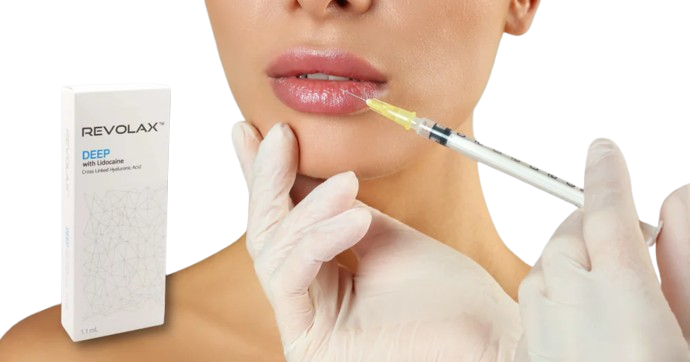Mirena
Does Mirena Have Hormones?
Aug 21, 2025
Throughout their reproductive years, women experience natural shifts in estrogen and progesterone, two key hormones that regulate the menstrual cycle, support fertility, and even influence mood and metabolism. After ovulation, progesterone levels rise to prepare the body for a possible pregnancy. Because these hormones are so central to reproductive health, modern contraceptives often use synthetic versions, called progestins, to safely mimic or modify the body’s natural rhythms.
The Mirena intrauterine device (IUD) is one example. Instead of relying on estrogen, it releases a steady dose of levonorgestrel, a type of progestin, directly into the uterus. This targeted hormone delivery changes the local reproductive environment to prevent pregnancy, all while keeping overall hormone levels in the bloodstream relatively low.
In this article, we’ll break down whether Mirena contains hormones, how those hormones work in the body, and what users can expect when it comes to contraceptive effectiveness, cycle changes, and possible side effects.
Key Takeaways
- The Mirena IUD is a hormonal contraceptive that releases levonorgestrel, a synthetic progestin, directly into the uterus.
- FDA approval allows Mirena for up to 8 years of contraception and 5 years for heavy menstrual bleeding.
- Hormone release starts at about 21 µg/day after 24 days, tapering to 11 µg/day at 5 years and 7 µg/day at 8 years.
- Mirena’s local hormone delivery thickens cervical mucus, thins the uterine lining, and reduces bleeding, all with minimal systemic exposure.
- Common side effects include irregular bleeding, headaches, mood changes, and ovarian cysts (seen in ~7–12% of users). Most improve over time.
- Fertility returns quickly after removal, with most women resuming ovulation within weeks.
About: Trusted by over 2,000+ global clients since 2014, Maylips has become a leading supplier of cosmetic, skincare, and orthopedic products for medical and aesthetic professionals. Maylips offers a wide range of authentic brand-name products at competitive wholesale prices, sourced from around the world. If you’re looking to buy Mirena online, contact our sales team for guidance.
Hormonal Composition of the Mirena Device
The Mirena intrauterine device (IUD) is a long-acting, reversible contraceptive that relies on levonorgestrel, a synthetic form of progestin, to prevent pregnancy. Each device contains 52 mg of levonorgestrel. According to FDA data, Mirena releases approximately 21 micrograms per day after 24 days, declining to about 11 micrograms daily at 5 years and 7 micrograms daily at 8 years.


In the United States, Mirena is approved for up to 8 years of contraceptive use and 5 years for the treatment of heavy menstrual bleeding. Its estrogen-free formulation makes it a preferred option for women who wish to avoid estrogen-related side effects.
The small, T-shaped device is placed inside the uterus, where it releases levonorgestrel directly into the uterine cavity. This localized hormone delivery provides highly effective contraception while keeping systemic hormone levels low. Because of this design, Mirena delivers reliable pregnancy prevention with fewer whole-body hormonal effects compared to many systemic contraceptives.
How Levonorgestrel Works in the Mirena IUD
Once placed in the uterus, Mirena begins delivering levonorgestrel where it is most needed. Its effectiveness comes from multiple mechanisms that modify the reproductive environment locally:
- Cervical Mucus Thickening: Levonorgestrel increases the density of cervical mucus, creating a barrier that impedes sperm from entering the uterus.
- Endometrial Suppression: The hormone thins the uterine lining, making it inhospitable for implantation even if fertilization occurs.
- Partial Ovulation Inhibition: Data show that ovulation is suppressed in many women early in use, with about 45% of cycles ovulatory after 1 year and around 75% ovulatory by year 4. This means ovulation suppression is possible but not the primary mechanism.
- Tubal Motility Effects: Research suggests Mirena may also affect egg transport through the fallopian tubes, though this is considered a secondary effect rather than a central contraceptive mechanism.
These combined effects make Mirena over 99% effective in preventing pregnancy. Because its hormone primarily acts in the uterus, systemic absorption is limited, which improves overall tolerability while maintaining contraceptive power.
Local and Systemic Effects of Mirena’s Hormone
Mirena’s hormone delivery is concentrated within the uterus, providing effective contraception with relatively little systemic exposure. Locally, levonorgestrel:
- Thickens cervical mucus, preventing sperm entry.
- Thins the endometrial lining, lowering implantation likelihood.
- Reduces menstrual bleeding and cramping, with many women experiencing lighter periods or even amenorrhea over time.
Although a small amount of levonorgestrel enters the bloodstream, these levels are far lower than with oral contraceptives. As a result, systemic side effects are generally less common. When they do occur, they may include:
- Headaches, acne, or breast tenderness – typically mild and transient.
- Mood changes – variable, sometimes temporary.
- Ovarian cysts – seen in about 7–12% of users over 5 years; these are usually benign and resolve on their own.
Rare complications such as device expulsion or uterine perforation are linked to insertion rather than hormone exposure, and occur infrequently. Importantly, fertility typically returns promptly once Mirena is removed, as hormone levels normalize quickly.
This balance of high contraceptive reliability with minimal systemic effects is one reason Mirena is considered a strong option for long-term birth control.
Potential Hormone-Related Side Effects of Mirena
Some women experience hormone-related side effects in the months after insertion, as the body adjusts to levonorgestrel. A common question asked in this context is: Do you ovulate with Mirena IUD? The answer is that ovulation often continues, though suppression is more likely early in use and less common over time.


Potential side effects include:
- Irregular bleeding or spotting, especially in the first 3–6 months, usually improving with time.
- Breast tenderness, mild acne, or headaches, linked to low but present systemic hormone absorption.
- Mood swings or emotional changes, which vary widely among individuals.
- Ovarian cysts, occurring in about 7–12% of users, almost always resolving spontaneously.
- Rarely, device expulsion or uterine perforation during insertion.
The majority of these effects improve within the first year. Many women then report the welcome benefit of lighter or absent periods, thanks to the thinning of the uterine lining. Mirena’s unique local hormone delivery makes it more tolerable for women who may not do well on systemic hormonal contraceptives.
Conclusion
Mirena is a hormonal intrauterine device that releases levonorgestrel, a synthetic progestin, directly into the uterus. By acting locally rather than systemically, it provides effective, long-term contraception with relatively low hormone exposure.
For women seeking a low-maintenance method that can also bring benefits like lighter periods, Mirena represents a convenient and reliable choice. As always, it’s important to discuss personal medical history and hormone sensitivities with a healthcare provider to ensure the method is a good fit.
FAQs
1. How long does Mirena last?
In the U.S., Mirena is FDA-approved for up to 8 years of contraception and 5 years for the treatment of heavy menstrual bleeding.
2. Is Mirena reversible?
Yes. Fertility usually returns quickly after removal, often within the first month, though timing may vary.
3. Does Mirena stop periods completely?
Not for everyone. Some users experience lighter bleeding or no periods at all after the first year, while others continue with reduced but regular cycles.
4. Can Mirena be used for heavy menstrual bleeding?
Yes. Mirena is FDA-approved to treat heavy periods in women who also desire contraception.
5. How soon does Mirena work after insertion?
If inserted within 7 days of the start of a period, protection is immediate. It is also effective right away if inserted immediately after a first-trimester abortion or within 7 days postpartum in non-breastfeeding women. Otherwise, backup contraception is recommended for 7 days.
6. Is Mirena safe while breastfeeding?
Yes. Mirena can be placed postpartum and is considered safe to use while breastfeeding.
7. Does Mirena protect against STIs?
No. Condoms or barrier methods are still needed to protect against sexually transmitted infections.
Talk with our sales representative.
Book a Meeting
References
Handelsman DJ, Hirschberg AL, Bermon S. Circulating testosterone as the hormonal basis of sex differences in athletic performance. Endocrine Reviews. 2018;39(5):803-829. doi:10.1210/er.2018-00020
Hormonal IUD. Cleveland Clinic. Published May 29, 2025. https://my.clevelandclinic.org/health/drugs/hormonal-iud-mirena





